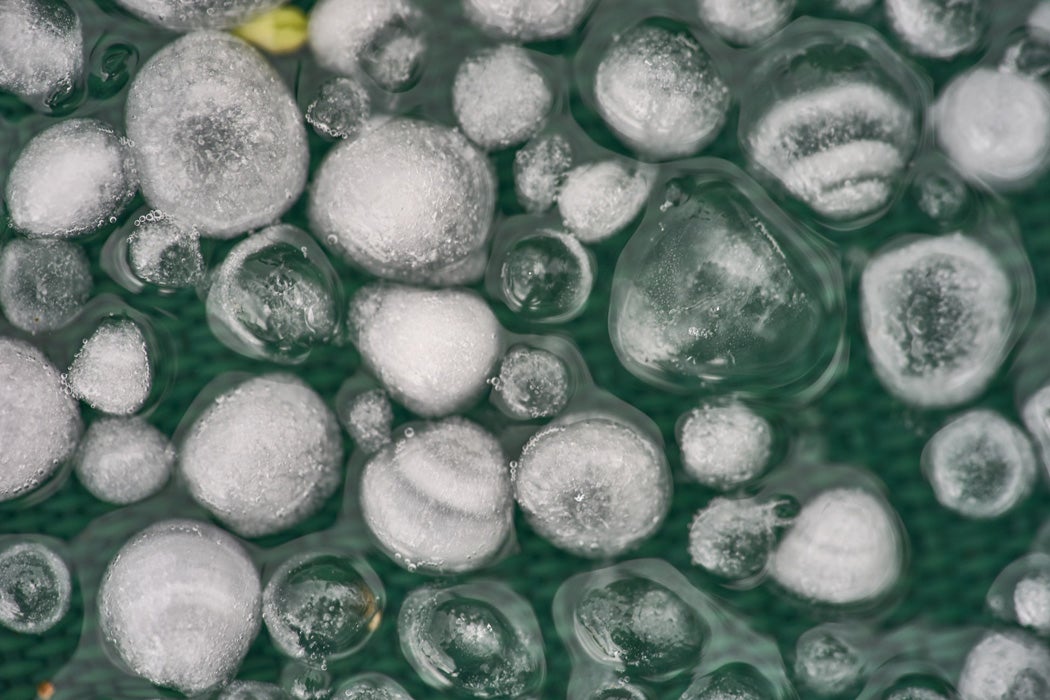On June 30, 2019, residents of Guadalajara, Mexico, awoke to find their tropical city buried beneath three feet of ice following a massive hailstorm. Unusual in the tropics, hail is a common concern for farmers throughout the Midwestern United States, as large hailstones can damage crops and infrastructure. But what is hail?
Like so many other intense weather phenomena, hail begins in thunderstorms. Atmospheric sciences scholar G. Brant Foote, writing in the Journal of Applied Meteorology, studied a particular storm in depth and described some of the conditions required for storm formation.
According to Foote, in order for hail to form there must be strong updrafts in a storm. In the middle levels of the storm, water droplets are carried to higher elevations by strong updraft currents. Eventually, the droplets freeze into a tiny crystal known as a hail embryo, or graupel. This process takes ten to sixteen minutes. If the storm is cold enough to freeze water, hail is likely to develop. Hail rarely forms in the warm tropics because it is typically much too warm.
The more moisture present in a storm, the easier it is for hailstones to grow. As the tiny crystals are carried higher into the storm, super-cooled water circulating throughout the storm’s upper layers begins to stick in layers to the growing hailstones. The stronger the updraft, the higher the hailstones are carried and the more layers of ice can grow around them. The more moisture in the storm, and the longer the growing hailstones are circulating in the freezing zone, the larger the hailstones may become. Since they accumulate layers of ice at different rates as they move through the storms, hailstones can take on some fantastic shapes. Once formed, hailstones fall to earth at different rates depending on size and the air currents within the storm.
Weekly Newsletter
The conditions for hail formation are similar to the conditions that can spawn tornadoes. Radar can detect large hail forming in a thundercloud, and warnings can be issued so people can take cover if necessary. Fortunately, while large hail can cause a lot of property damage, as it did in Mexico, at least it is rarely deadly.







